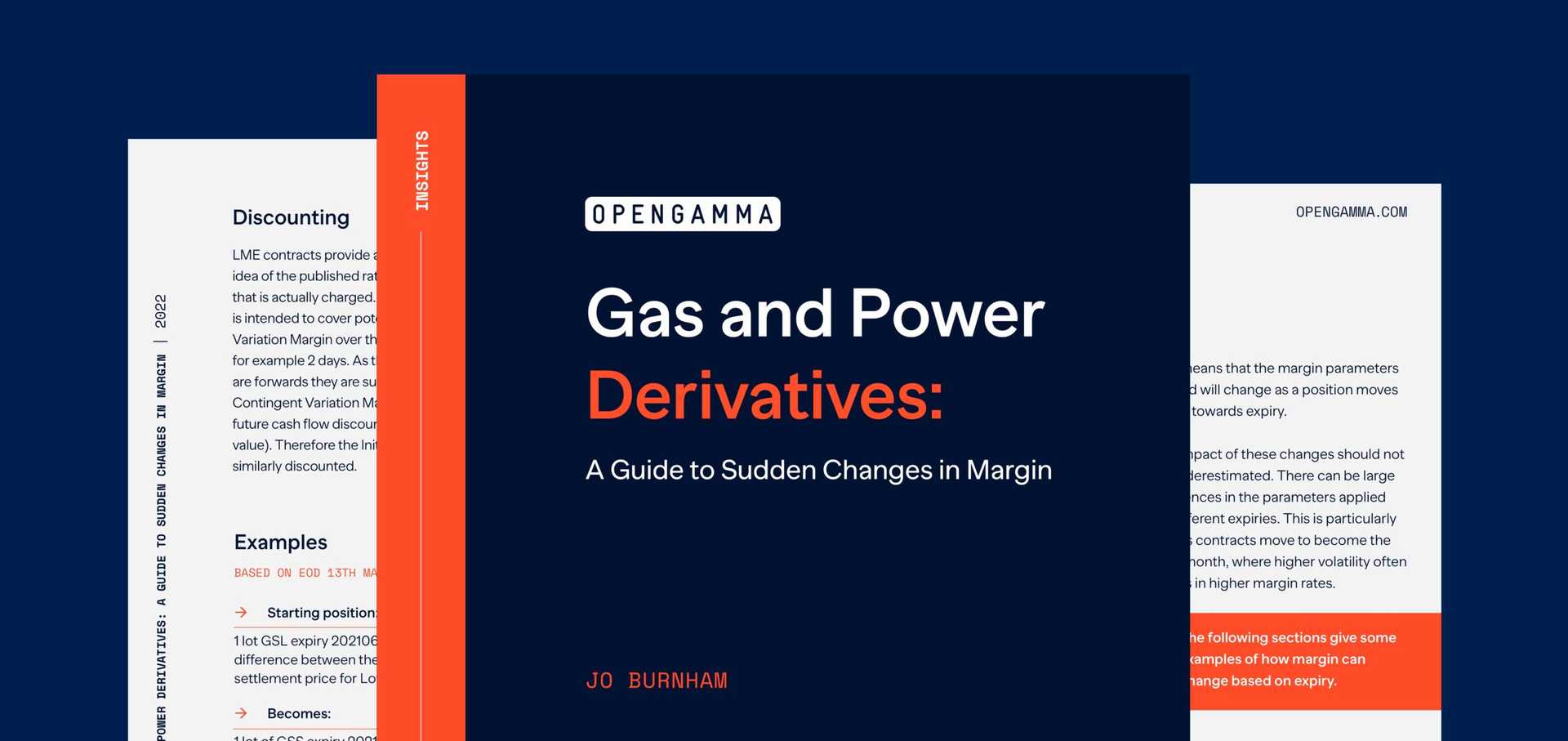There Are a Number Of Potential Culprits Responsible For Unexpected Changes In Gas and Power Margins
People often say that the calculation of Initial Margin is difficult to understand. However, it can be even more confusing if you find your margin requirement suddenly increasing when you haven’t made any changes to your portfolio.
The most obvious cause of unexpected changes in gas and power margin would be updates to CCP margin rates. These are most likely to occur when large price movements have been seen in the market, although they do also change periodically following a review by the CCP.
But if that isn’t the case, and there have been no parameter changes, why might you still be seeing large jumps in margin? There are a number of potential culprits, but they all have their roots in the way that CCPs set their margin rates.
What Causes These Unexpected Changes In Gas and Power Margins?
For commodities, generally CCPs are using SPAN as the initial margin methodology. But most will actually be using historic VaR to set the SPAN parameters. To do this they need historic returns for at least 2 years. The first problem is how you map the prices across multiple expiration dates into a series of the required length. The second is how you then map each of these series to the expiries of the currently tradable contracts, taking into account contract rolls and the introduction of new far months.
The result of all the mapping is a set of tiered margin rates, with different levels set for each relative expiry. As contracts move towards expiry the rate charged will change based on the time to expiry, with the level tending to increase as contracts move closer to expiry. This creates sudden jumps in margin requirements; there is no smoothing applied to make this a more gradual change.
This increase in margin can be much more pronounced if you are trading cascading futures, such as gas or power. The position will change, for example, from one in the yearly contract to 3 monthlies and 3 quarterlies. Each of these will have it’s own individual margin rate, with the monthlies likely to have higher rates than that attributed to the yearly contract, based on the increased volatility of these contracts. And as the front month moves into delivery, the margin on the second month will jump as it becomes the new front month.
This isn’t the end of it. As the quarterlies cascade into monthlies there will be further jumps in the margin. Changes in margin requirements of around 40% for the impacted contracts are not unusual.
How Can You Combat Unexpected Changes In Gas and Power Margins?
In order to support active margin management and to optimise the costs of margin, you need to take account of these features of the way in which margin rates are set.
The first thing is to be aware of what is happening. Cascading occurs on particular dates, for example 2 business dates before the end of the year. Similarly, predictable rules apply to changes in applied margin rates as contracts roll or move towards expiry.
Secondly, you can use this knowledge to forecast margin changes, simulating the impact of any automatic position changes or parameter increases. In this way you can make sure you don’t get caught out with any funding issues.
It is important to understand that the increased market volatility, and the subsequent margin rate increases implemented by the CCPs, might not be the most common cause of unexpected changes in commodity margin. Actually, just the normal events, such as moving towards expiry or cascading, can lead to significant jumps in margin levels.




